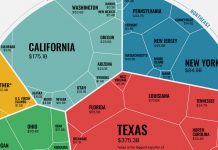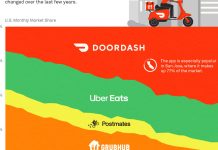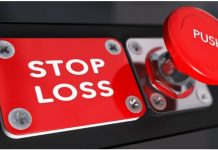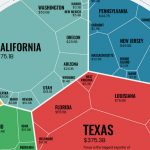I recall the first occasion when I read Warren Buffett’s yearly letter to Berkshire Hathaway investors. It was clever, it was engaging, and it wasn’t a thing like your standard yearly report with reflexive pages, full-tone photographs, and psyche desensitizing promoting talk.
That first time, the page that blew me away was his rundown of corporate securities – explicitly the profit-creating stocks.
Berkshire Hathaway, as of the 2017 letter, claims 400 million portions of stock at an expense of $1.299 billion. Each offer pays out $1.48 every year. Berkshire Hathaway gets $592 million from Coca-Cola each and every year.
That is a yearly yield of 45.6%.
At the point when we take a gander at the 2019 letter, we see that he presently gets $640 million in profits every year (he hasn’t procured additional portions of KO). His yearly yield on this speculation was 49.26% in 2019.
How could this be conceivable!? What is this divination!?
Time is a financial backer’s dearest companion.
Buffett gained portions of Coca-Cola in 1988. In those days he stated “We hope to hold these protections for quite a while. Indeed, when we own parts of remarkable organizations with exceptional administrations, our #1 holding period is until the end of time. We are the exact inverse of the people who rush to sell and book benefits when organizations perform well yet who constantly cling to organizations that baffle. Peter Lynch appropriately compares such conduct to cutting the blossoms and watering the weeds.” (1998 letter)
The recipe is basic. He purchased the offers quite a while past, his expense premise was a lot slower than the market’s worth, and KO continued expanding profits. In the event that you purchase shares today of KO (at $48.67), you get a 3.37% yield. Warren Buffett is drawing near to half!
I needed to recreate his prosperity. I needed to fabricate an arrangement of blue-chip, profit stocks that would create automated revenue for us.
I’ll begin with clarifying where profits fit in our current portfolio, follow it up with a conversation of why we put resources into people stocks and not profit reserves, a short talk about the components in support of ourselves followed by the technique I use to pick stocks. We should go!
Where Dividends Fit in Financial Picture
Before we get into how I constructed my profit portfolio, know-how everything fits.
70% of our securities exchange ventures are in different Vanguard reserves. The equilibrium is in individual profit delivering stocks. The Vanguard reserves likewise produce profits, since many stocks in the financial exchange produce profits, however, I don’t consider those supports part of the “profit” segment of our portfolio. The Vanguard 500 Index Fund Shares has a nice 1.74% yield, so it’s not insignificant!
My objective with-profits was to make a surge of easy revenue that would go about as protection against the unconventionality of business. I can place them in a profit tracker to keep them all straight.
In 2015, that stream added up to $55,152.60, a 10.4% expansion more than 2014. (what’s more, what’s pleasant with regards to this pay is that it’s charged at the 15% long haul capital increase rate as well!)
It would increment to $57,750 in 2016 and $64,981 in 2017.
Some portion of the expansion is credited to more speculations, a piece of it was profit development. Profit development is particularly alluring in light of the fact that I don’t need to submit any more cash to get more noteworthy profits… you can’t beat that!
Why Individual Stocks?
In the event that minimal expense record reserves are awesome, why not utilize a minimal expense profit store from Vanguard? The Vanguard Dividend Appreciation Index Fund Investor Shares (VDAIX) has a 1.92% yield with a cost proportion of 0.17% (the Admiral rendition’s cost proportion is simply 0.08%).
It holds a considerable lot of the very organizations that I would wind up purchasing. Toward the finish of Jan2016, 36.6% of the possessions were in Microsoft, J&J, Coca-Cola, P&G, Pepsi, Wal-Mart, IBM, CVS, Medtronic, and 3M… exemplary profit delivering blue shredders. As of this composition, of that rundown, I just own Microsoft, Medtronic, and Coca-Cola.
So for what reason didn’t, I go with an asset? I needed to filter out organizations that had higher profit development rates and higher profit yields. 2.25% on a profit store is meh, particularly when the S&P 500 yields 1.74%, correct? I needed more.
I additionally needed to have a good time and scratch that stock picking tingle in a manner that was protected, keen, and fit our monetary arrangement.
Try not to think little of the worth in mindfully scratching a tingle. It’s superior to I will take a shot at picking profit stocks than the other options. ?
A Few Factors in My Favor…
To place everything in a better setting, know a couple of things I saw as my benefits:
I just sold an organization and had a sizable amount of investable resources – While this permitted me to develop my profit portfolio quicker, it didn’t give me any unique access or benefit other than lower exchange expenses on Vanguard.
The extraordinary downturn just abused stocks, I was getting them at a major markdown – The deals will be less and farther between now. General Electric was pretty much as low as ~$7 in March 2009! With such countless deals, I had the option to commit a few errors and not get scorched as severely by them.
I have time on my side – I see our resources as a progression of pails. Close term (required inside the following 5 years), the center term (5-10 years), and long haul (10+). The entirety of this cash was long-haul cash so I could place it in individual organizations, with more prominent unpredictability, since I could stand by out the instability. Each stock I’ve claimed for over 3 years is positive (not positive in “genuine” terms, similar to versus expansion or the S&P or some other benchmark, yet they’re green).
I accept that in the event that you need the cash in the following five years, don’t place it in the securities exchange. It’s simply excessively unpredictable. In the event that you needn’t bother with it for 10+ years, it must be in the securities exchange (or another speculation). It can’t be in real money, you surrender an excess of development.
I additionally accept that profits are amazing. You’ve likely heard measurements that say profits represent a major level of gains in the financial exchange (here’s an article by Bob Pisani about it). I consider it to be acceptable protection against pay instability, of which I experience a decent measure as a business visionary.
In July 1998, KO hit $43.59 – a high that wouldn’t be returned to until October 2014. Ack!
That would smell in the event that you required your cash since KO’s stock cost mulled for some numerous years. In any case, They continued to deliver and expanding that profit. KO’s stock cost might have smelled however KO was taking care of its work and delivering its profit. That is really great.
(Outlines like that likewise make securities exchange bloodbaths more acceptable — as long as the stocks continue to take care of their responsibilities!)
How I Built My Dividend Portfolio
My standards for picking organizations have gradually developed throughout the long term.
It’s not awesome, I don’t think any framework at any point is, yet it has worked for me.
The main channel is that they should be a notable family mark or be a Dividend King or Dividend Aristocrat. A Dividend King is an organization that has expanded its profit for 50+ years, just 18 organizations have done that.
A Dividend Aristocrat is an organization that has expanded its profits for something like 25 years. (Trickle Investing Resource Center calls them Dividend Champions and sorts out them in an extremely valuable Excel bookkeeping page) All Dividend Kings are Dividend Aristocrats.
As everybody knows, “past execution isn’t demonstrative of future outcomes!” I completely accept that… however I don’t stop my investigation with those rundowns. They simply pare down the universe of stocks to a more sensible subset. Additionally, 25 and 50 years is quite a while. ?
The following channel is monetary and the huge number I need to take a gander at has to do with profit inclusion. Profit inclusion is the organization’s income per share separated by the profit per share. I need profit to be double that of the profit, or a profit front of multiple times. I additionally take a gander at a portion of different measurements much use to examine an organization (expansions in income per share, value per share development rate, and so on) The fundamental thought here is that I need to ensure they can keep delivering the profit (inclusion) and that they can keep on developing the profit (expanding EPS).
Presently I’m certain that the organization is monetarily steady, I look at its profit development. It needs to beat 3% every year, which is the thing that I put in my mind as a normal expansion. Swelling is such a flighty number yet I’m sure that having a development rate more prominent than 3% means the profit will become quicker than expansion.
Then, I begin doing some inquiries about these organizations on other monetary sites I trust. Profit Growth Investor is a blog I’ve been following for quite a long time, he works really hard of dissecting a lot of organizations. His analysts are likewise magnificent as well and I’ve found people like Passive Income Pursuit through him. I likewise like Crossing Wall Street, however it doesn’t have a profit point, it’s very much educated and the Friday market audits are an unquestionable requirement perused.
I read different online journals, not for their examination fundamentally, but rather a lot of times they reveal news or goodies I didn’t see. It’s additionally amusing to peruse another person’s methodology and see what you can coordinate into your own.
Finally, realize when to overlay them. I sell when the conditions change. You generally need to know when you intend to exit, or you risk settling on choices dependent on feeling. As of late, ConocoPhillips declared they were cutting their profit. I sold this is on the grounds that its motivation was to be a profit stock (and at a specific yield)… and they cut their profit from $2.96 an offer to $1 an offer. It’s as yet a profit stock, simply a lower yield one, however, it quit doing the work I required.


































